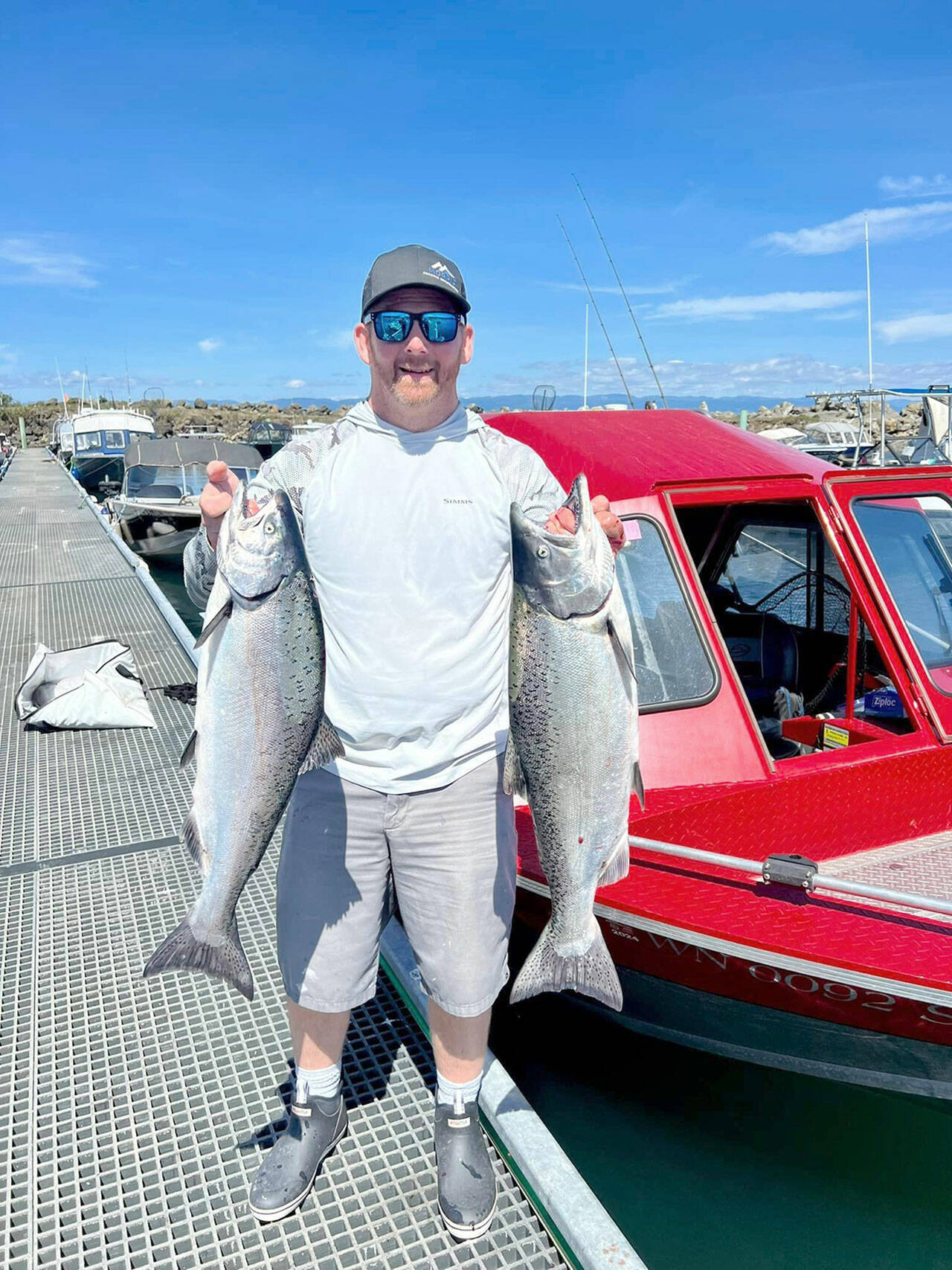IT’S A PRIME time for pinks as the humpbacked, odd-year schools make their way along the Strait of Juan de Fuca.
“Last week was the first big push of humpies into the Puget Sound,” Quilcene resident and tackle maker Ward Norden said.
“My customers on Whidbey Island called Wednesday morning a ‘bloodbath’ of humpies put on the beach by shore casters mostly using Rotator Jigs.
“While this was going on on Whidbey, this angler was seeing mostly coho casting from the beach at Fort Flagler.”
Pinks are attracted to pretty much anything you toss at them, particularly in the early morning and evening hours as the fish feed closer to shore. But pink is the most effective lure color, even though chartreuse, orange and other colors can all draw attention.
The most popular and effective lures for casting from shore or boat include pink buzz bombs and mini hootchie jigs.
Techniques used to catch pinks are simple, too.
Cast and retrieve while lifting your rod tip up in a vertical motion and then dropping your rod tip to let the jig flutter down.
Reel up the slack and continue the jigging. Try to avoid hitting bottom and snagging your gear.
When casting from shore, use a 7- to 10-foot medium to medium-heavy spinning setup with 15- to 20-pound clear monofilament test line.
Coho have started to move in as well, but only in fits and starts the farther east you fish in the Strait.
Halibut back on
Added halibut dates begin today and run through Sept. 30 in the Strait of Juan de Fuca and Puget Sound (Marine Areas 5, 6, 7, 8-1, 8-2, 9 and 10) and also off of La Push and Neah Bay (Marine Areas 3 and 4).
Strait and Puget Sound anglers will fish for the remaining recreational quota tonnage of 79,031 pounds.
Combined, Neah Bay and La Push anglers will fish on a 129,688-pound quota for the remainder of the season.
The updated rules also include temporarily raising the annual halibut bag limit to six fish in all marine areas.
Anglers who have already purchased a halibut catch record card (CRC) will be able to obtain a free supplemental CRC with two halibut lines.
Anglers who have not yet obtained a halibut CRC will receive the supplemental halibut CRC when they purchase a halibut CRC.
The fastest way to get a supplemental CRC is to purchase one directly from a Fish and Wildlife license dealer.
Online transactions take between seven and nine business days to arrive by mail.
In all marine areas currently open to halibut fishing, there is a one-fish daily catch limit and no minimum size restriction.
Big Quil/Dabob coho
The Big Quilcene River’s fall coho fishery opened Wednesday.
Until Aug. 31, fishing is allowed from the mouth to the downstream terminus of the state Department of Fish and Wildlife public access easement. The access easement is on the north side of the river and runs from the U.S. Highway 101 bridge downstream approximately 1 mile.
Fishing will run through Oct. 31 from the downstream terminus of the public access easement to the U.S. Highway 101 bridge.
For both sections of the river, the regulations on retention remain the same.
Anglers can keep a daily limit of four coho that are of a minimum 12 inches in size. A night closure is in place as is an anti-snagging rule.
Release all salmon other than coho.
“Coho are starting to arrive slowly at the Quilcene [federal] hatchery,” Norden said.
“A few have been caught in Dabob Bay, but I always remind fellow Dabob anglers that the coho runs never really get going until after the humpy [pink] schools have passed through. Coho and humpies don’t seem to play well together. Be patient for another week or two. It looks like this will be a good year in Dabob when the time comes.”
And the Big Quil will see a large construction project in the coming years.
The Jamestown S’Klallam Tribe has received $25 million to replace the Big Quilcene River bridge on Linger Longer Road — adding a bridge “with pedestrian infrastructure and will also replace flood-prone segments of Linger Longer Road.”
________
Sports reporter/columnist Michael Carman can be contacted at mcarman@peninsuladailynews.com.

